
Last year, I thought I could outsmart hunger with pure willpower. Three days into a 500-calorie plan, I was standing in my kitchen at 2 AM, staring at a jar of peanut butter like it held the secrets of the universe. That’s when I realized this wasn’t about willpower at all – my brain had basically hijacked my entire nervous system.
Here’s the thing nobody tells you: extreme caloric restriction is less about portion control and more about understanding how your brain chemistry, social relationships, and metabolic systems all gang up against you in predictable ways. After watching dozens of people navigate this approach (and surviving it myself), I’ve learned that success comes from working with these changes instead of pretending they won’t happen.
According to the Dietary Guidelines for Americans 2020-2025, “the least amount of calories a person can consume a day is 800 calories – and that’s for babies aged 12 months” (BetterMe), which puts the extreme nature of 500-calorie restriction into serious perspective.
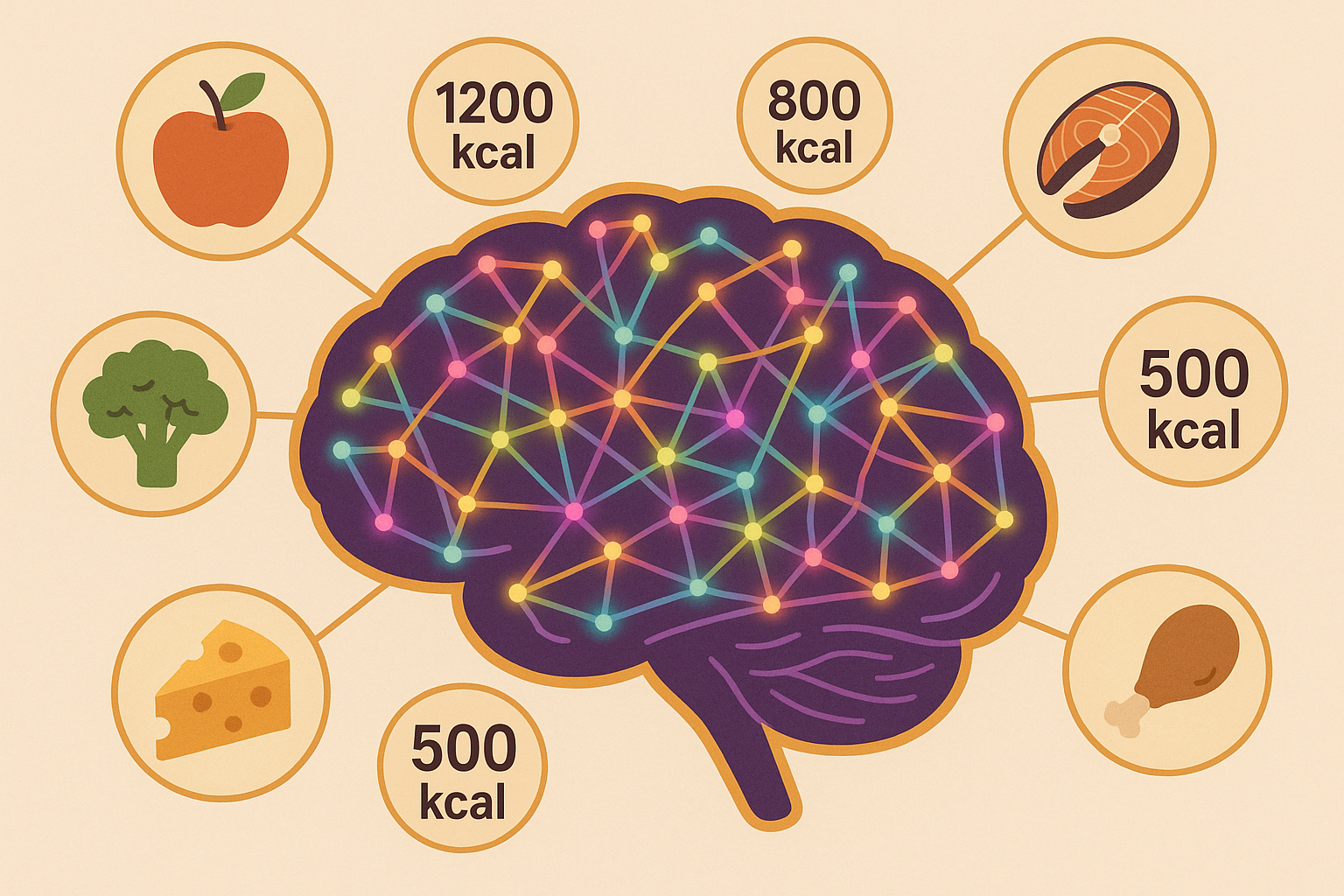
Table of Contents
- The Brain Chemistry Rollercoaster Nobody Warns You About
- Why Your Social Life Becomes Your Biggest Challenge
- Making Every Calorie Count When You Only Have 500
- Getting Back to Normal Eating Without Losing Your Mind
TL;DR
- Your brain goes through predictable chemical changes that create “danger zones” you can actually prepare for
- The mental energy needed to plan extreme restriction often burns you out before hunger does
- Your family and friends will unconsciously sabotage you more than any craving ever could
- Every single calorie has to work overtime – no room for empty foods or poor timing
- Getting off extreme restriction is harder than starting it, and most people completely mess this up
- Real success means developing a healthier relationship with food, not just temporary weight control
The Brain Chemistry Rollercoaster Nobody Warns You About
When you’re following a 500 calorie diet, understanding what’s happening in your head becomes crucial, especially when combined with strategic intermittent fasting approaches that can help manage the psychological chaos.
When you drop to 500 calories a day, your brain doesn’t just get hungry – it literally rewires itself. I’m talking about your reward system going haywire, hunger hormones getting all mixed up, and your ability to make decisions basically disappearing right when you need it most. The crazy part? It all happens on a timeline you can actually predict.
You know that superhero feeling you get on day one? That’s your brain flooding you with feel-good chemicals to motivate food-seeking behavior. The crash that follows around day three isn’t weakness – it’s your body realizing this “famine” isn’t ending and switching to survival mode. Most people blame themselves for “lacking willpower” when they’re actually fighting against brain chemistry that would challenge anyone.
Your Reward System Gets Hijacked (And How to Work With It)
The chemical signals that control hunger and satisfaction get completely scrambled during severe caloric restriction. This creates an initial high followed by intense cravings and potential binge behaviors that feel impossible to control. But here’s the thing – it’s not a character flaw, it’s predictable brain chemistry.
Your brain evolved to keep you alive during food scarcity, which means it interprets your 500 calorie diet as a genuine survival threat. That euphoric feeling during the first few days? That’s your reward system going into overdrive, trying to motivate you to find food. When that doesn’t work, things get interesting – and by interesting, I mean your brain starts playing tricks on you.
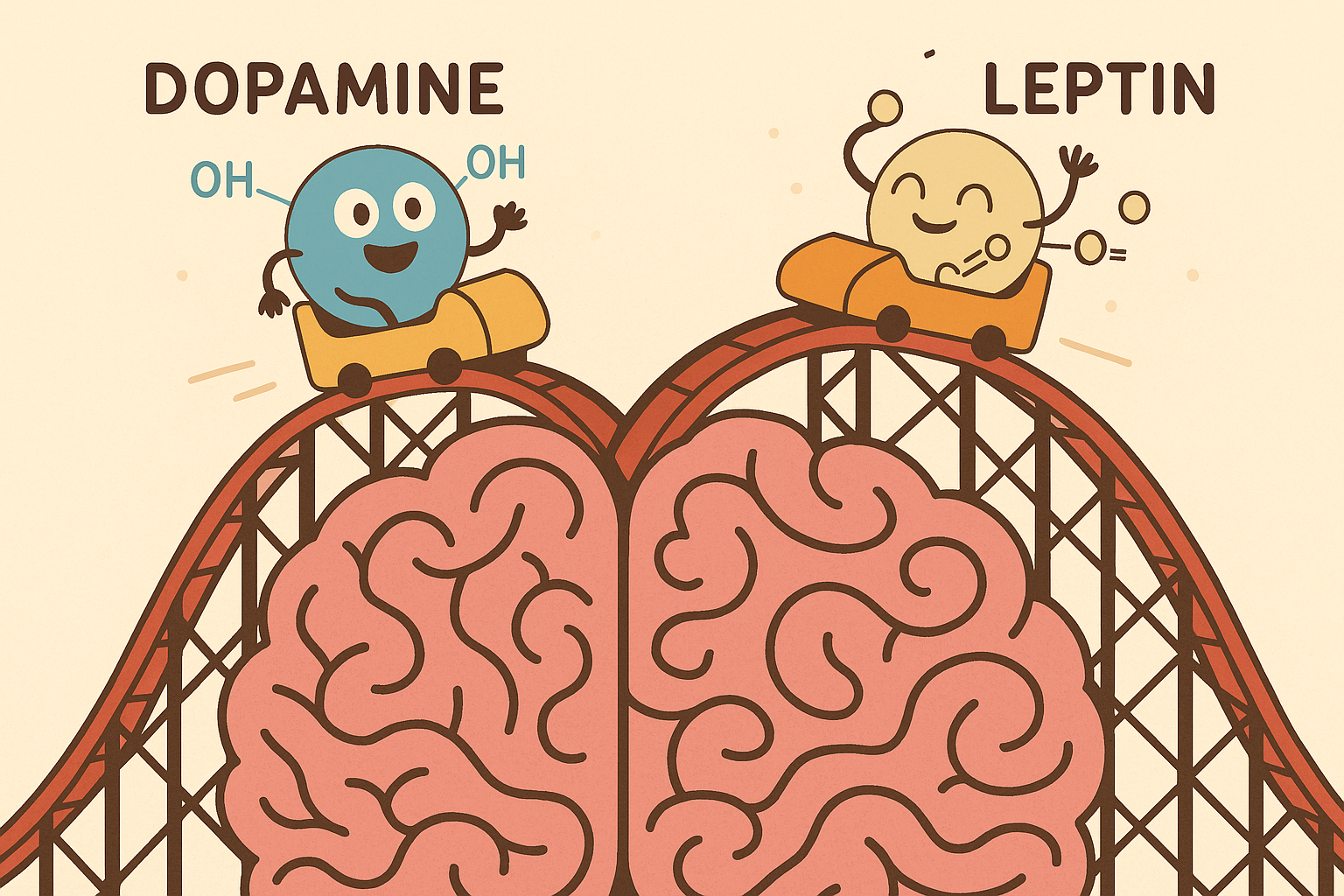
Mapping Your Personal Brain Chaos Timeline
Your brain follows a surprisingly predictable pattern during the first 21 days of 500-calorie restriction. Most people hit rough patches around days 3-5, 10-12, and 18-21. Knowing this timeline means you can prepare for the storm instead of being blindsided by it.
After helping people navigate this approach, the pattern is remarkably consistent. Days 1-2 feel almost easy, even exciting. Days 3-5 bring the first real “oh shit” moment as hunger hormones start dropping. Days 6-9 create false confidence – you’ll think you’ve cracked the code. Then days 10-12 hit with brain fog and irritability that makes you question everything.
The danger zone hits around days 18-21 when your system starts breaking down. This is when people either push through to establish new patterns or crash spectacularly into a pizza box. Knowing this timeline means you can prepare specific strategies for each phase instead of hoping willpower carries you through.
| Day Range | What’s Happening in Your Brain | How You’ll Feel | What Actually Helps |
|---|---|---|---|
| Days 1-2 | Feel-good chemical surge | Like a superhero | Document how you feel now |
| Days 3-5 | Hunger hormones start dropping | First major “I need food” panic | Extra electrolytes, meditation |
| Days 6-9 | Appetite suppression kicks in | False confidence (danger!) | Monitor sleep quality |
| Days 10-12 | Stress hormones spike | Irritable, foggy brain | Strategic refeed window |
| Days 13-17 | Body switches to survival mode | Energy crashes | Light movement, social support |
| Days 18-21 | System breakdown risk | Intense binge urges | Professional check-in |
What you actually need to do:
- Track your mood, energy, and craving intensity daily for the first 21 days
- Figure out your personal pattern (it’s usually around those days I mentioned, but everyone’s slightly different)
- Plan your survival strategies for high-risk periods – meditation apps, electrolyte drinks, someone to call who won’t judge you
Sarah tracked her brain chaos timeline and discovered her vulnerability windows hit on days 4, 11, and 19. By preparing meditation sessions, electrolyte drinks, and supportive phone calls in advance, she successfully navigated these periods without breaking her protocol. On day 11, instead of giving in to intense pizza cravings, she used her pre-planned strategy: a 20-minute meditation followed by a call with her accountability partner who talked her through the temporary nature of the craving.
When Your Hunger Hormones Go Silent (The Ghrelin Trap)
Extended 500-calorie restriction can temporarily shut down your hunger signals, making you think you’ve conquered appetite when you’ve actually just broken your body’s feedback system. This false sense of control often leads people to push harder right when their body needs strategic support.
The hunger hormone suppression usually kicks in around day 6 or 7, and suddenly you feel invincible. “I’m not even hungry anymore!” becomes your rallying cry. But here’s what’s really happening – your body has gone into emergency mode and shut down one of its most important communication systems to conserve energy.
When those hunger signals finally come back online – and they will – the rebound can be absolutely overwhelming. People who felt completely in control suddenly find themselves obsessing about food and fighting urges they haven’t felt in weeks. It’s like your appetite was just playing dead, waiting for the perfect moment to ambush you.
What you actually need to do:
- Watch your sleep quality like a hawk – it’s an early warning system for hormone disruption
- Plan strategic refeed windows before your hunger resistance completely breaks down
- Use basic tracking if you can access it to monitor how you’re actually feeling versus what your brain is telling you
Decision Fatigue Will Sabotage You Before Hunger Does
The mental energy required to sustain 500-calorie meal planning often burns you out completely. Every food-related decision drains your finite mental resources, creating a predictable cascade of poor choices that typically hits 4-6 hours after your peak decision-making periods.
Think about how many food decisions you make in a normal day. What to eat for breakfast, whether to have that second cup of coffee, what to pack for lunch, whether to grab a snack. Now multiply the complexity of each decision by ten because you’re working within such tight constraints with your 500 calorie meal plan.
Your brain treats every food choice as a high-stakes decision when calories are severely restricted. Should I eat this apple now or save it for later? Is this the best use of 80 calories? What if I get hungrier this afternoon? These micro-decisions pile up throughout the day, steadily draining your mental resources until you hit decision fatigue and make impulsive choices.
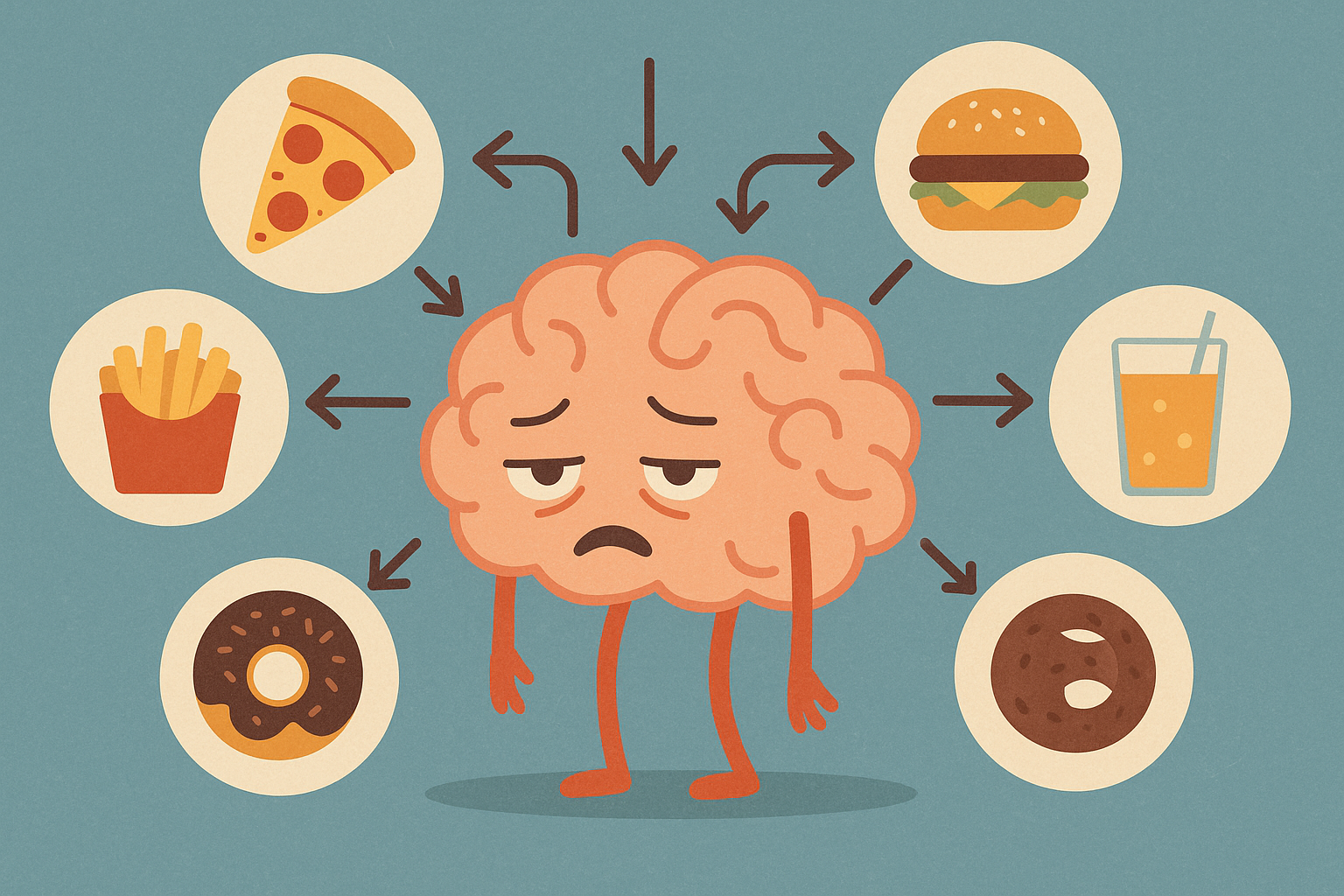
Streamlining Your Food Decisions to Save Mental Energy
Reducing daily food-related decisions through ruthless meal planning prevents the cognitive overload that leads to impulsive eating. The goal is to eliminate choice during high-stress periods by creating systems that don’t require active willpower.
I learned this the hard way during my first attempt. I spent so much mental energy planning and replanning my 500 calories throughout the day that I was completely fried by 3 PM. Every meal became a complex optimization problem, and I was making dozens of food-related decisions daily while my brain was already running on fumes.
The solution is brutal simplification. You need to make most of your food decisions once per week during a dedicated planning session, then execute those decisions on autopilot. This frees up your mental energy for other important stuff and reduces the likelihood of impulsive eating when your willpower is shot.
What you actually need to do:
- Create a maximum of 3 rotating meal templates for each week (more choices = more mental drain)
- Batch all meal planning decisions into one 30-minute weekly session
- Pre-portion everything to eliminate choice during high-stress periods
Decision Fatigue Prevention Checklist:
- ☐ Sunday meal prep session scheduled
- ☐ 3 meal templates prepared for the week
- ☐ All portions pre-measured and stored
- ☐ Backup meal options identified
- ☐ Shopping list automated
- ☐ Meal timing predetermined
The 4-6 Hour Willpower Crash (And How to Plan Around It)
Each food-related decision chips away at your mental resources, creating a predictable cascade of poor choices. This willpower depletion typically occurs 4-6 hours after your peak mental energy periods, which is why afternoon and evening become danger zones for most people.
Your willpower operates on a schedule that matches your natural energy rhythms. Most people have peak decision-making capacity 2-4 hours after waking, then experience gradual decline throughout the day. The crash usually hits hardest in mid-afternoon and early evening – exactly when you’re making dinner decisions and dealing with social food pressures.
Here’s what this actually feels like: by 3 PM, choosing between an apple or string cheese feels like solving calculus. You’ll spend 20 minutes staring into your fridge, calculator app open, trying to optimize 80 calories. It’s exhausting and completely unsustainable.
What you actually need to do:
- Schedule your most challenging food decisions during peak mental energy hours (usually 2-4 hours after waking)
- Create “if-then” protocols for common decision points to bypass willpower requirements entirely
- Set up your environment so the easy choice is the right choice
Metabolic Flexibility vs. Permanent Damage (There’s a Difference)
Understanding how your metabolism adapts is crucial when following extreme restriction, and many people find that activating autophagy through strategic fasting can help optimize the benefits while minimizing damage.
Your metabolism will slow down – that’s just biology, not failure. Think of it like your body switching to power-save mode on your phone. It’s trying to help you survive what it perceives as a famine, even if it’s annoying for your weight loss goals.
The line between temporary adaptation and permanent damage depends on how you implement the approach, your individual factors, and how you handle recovery. Your body’s metabolic rate adjustment follows predictable patterns that you can track and manage to prevent lasting slowdown.
Tracking Your Metabolic Stress Signals
Your body’s metabolic rate adjustment – basically your metabolism slamming the brakes – follows patterns you can monitor. Early detection of excessive stress allows you to implement strategic breaks before you cause lasting damage.
Your body sends clear signals when metabolic stress is becoming problematic, but most people don’t know what to look for. Your resting heart rate typically drops 5-10 beats per minute within the first two weeks. Your body temperature can decrease by half a degree or more. Sleep quality often goes to hell, and energy levels crash in predictable patterns.
These signs give you objective data about how your body is responding to the 500 calories daily intake. When multiple warning signs start flashing red simultaneously, it’s time to implement strategic interventions before the adaptation becomes more permanent.
What you actually need to do:
- Get baseline measurements: resting heart rate, body temperature, energy levels, and sleep quality
- Track weekly changes in these markers to catch early signs of metabolic stress
- Implement strategic diet breaks when your body starts waving red flags (typically every 10-14 days)
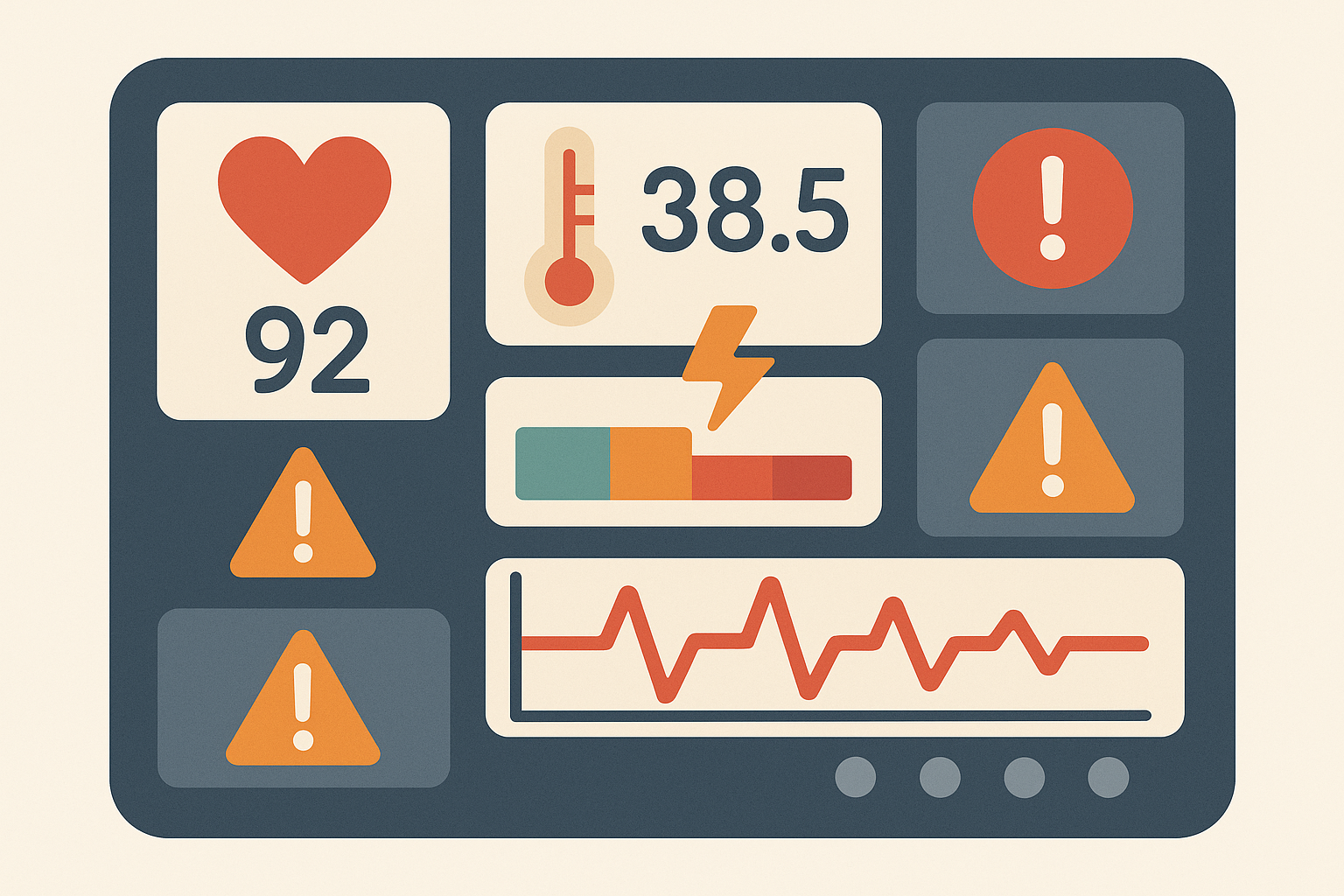
Why Your Social Life Becomes Your Biggest Challenge
The social dynamics surrounding extreme dietary restriction create hidden psychological press
The social dynamics surrounding extreme dietary restriction create hidden psychological pressures that often determine success more than the actual hunger. Your relationships, how you see yourself, and your sense of belonging all shift in ways that can either support or completely destroy your efforts.
Food is woven into our social fabric in ways we don’t fully appreciate until we step outside normal eating patterns. Business lunches, family dinners, coffee dates, happy hours – suddenly you’re navigating a minefield of social situations that revolve around food consumption. The psychological pressure to participate can be absolutely overwhelming.
I’ve watched people successfully manage the physical aspects of extreme restriction only to crack under social pressure. A well-meaning friend insisting you “just have one bite” or family members expressing concern about your eating habits can trigger emotional responses that derail weeks of progress. Understanding these dynamics helps you prepare strategies before you’re in the moment feeling attacked.
Your Identity Gets Tangled Up in Food Restriction
Adopting a 500-calorie meal plan triggers identity shifts that affect how you see yourself and how others see you. These changes can create both positive momentum and dangerous psychological patterns that need careful management.
Extreme dietary discipline becomes a source of identity and self-worth faster than you’d expect. Within days, you start seeing yourself as someone who has exceptional self-control, someone who can do what others can’t. This identity shift feels motivating initially, but it also creates psychological traps that are hard to escape.
When your sense of self becomes tied to dietary restriction, normal eating starts feeling like failure. You begin to fear that eating normally means you’re weak or undisciplined. This creates a mental prison where you feel compelled to maintain extreme behaviors to preserve your identity, even when they’re no longer serving your health goals.
Avoiding the Martyr Complex Trap
Extreme dietary restriction often triggers a psychological pattern where you start getting high off your ability to endure deprivation. This creates addictive cycles of restriction and guilt that can be harder to break than the physical hunger itself.
The martyr complex develops gradually and feels righteous at first. You start taking pride in your ability to say no to food while others indulge. You feel superior when colleagues eat lunch while you maintain your discipline with 500 calories a day. Social media posts about your “willpower” start getting likes and comments, reinforcing the behavior.
Here’s the problem: you’re essentially getting high off deprivation, which means normal eating behaviors start feeling like moral failures rather than healthy choices. The validation feels good, but it’s built on an unsustainable foundation that will eventually collapse.
What you actually need to do:
- Watch for early warning signs: feeling proud of hunger, comparing your restriction to others’ eating, using food control as proof of discipline
- Develop alternative sources of accomplishment and identity outside of dietary control
- Create accountability partnerships focused on health outcomes rather than restriction achievements
Mark noticed he was posting about his “discipline” on social media and feeling superior when colleagues ate lunch while he fasted on 500 calories. His accountability partner helped him recognize these martyr complex behaviors and redirect his identity toward health goals like improved energy and better sleep, rather than restriction achievements.
Preventing the Social Isolation Spiral
The practical limitations of 500-calorie meal planning naturally reduce social eating opportunities, potentially triggering isolation that undermines both mental health and long-term success. This happens so gradually that most people don’t notice until they’re already lonely and resentful.
Social eating situations become stressful when you’re managing such tight caloric constraints. Restaurant meals are nearly impossible to calculate accurately. Dinner parties put you in awkward positions where you have to explain your choices or pretend to eat. Happy hours become exercises in willpower as you nurse a single drink while others enjoy appetizers.
The easiest solution seems to be avoiding these situations entirely, but isolation creates its own problems. You lose important social connections and support systems right when you need them most. The loneliness can trigger emotional eating patterns that completely derail your progress when you finally break.
What you actually need to do:
- Proactively communicate with friends and family about your temporary dietary approach
- Suggest alternative social activities that don’t center around food
- Plan specific strategies for social eating situations (timing meals around events, bringing compliant options)
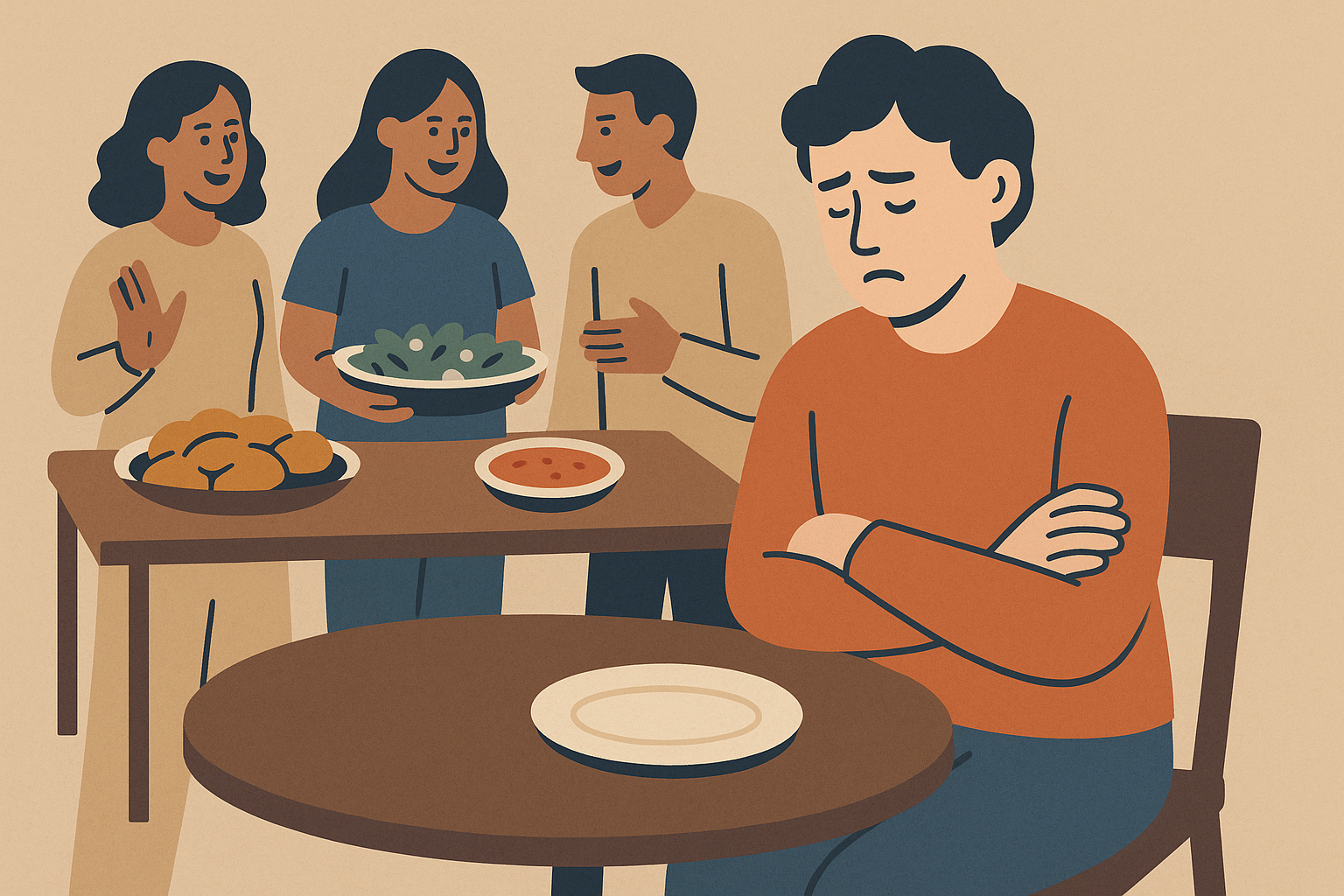
Your Family and Culture Will Push Back (Even When They Mean Well)
Extreme caloric restriction challenges deeply ingrained cultural and familial food relationships, often triggering unexpected emotional responses and resistance from your social network. This resistance usually comes from love and concern, but it can completely derail your efforts if you’re not prepared.
The growing popularity of low-calorie meal delivery services reflects this challenge. “Weight loss requires a low-calorie diet. At least, a lower-calorie diet that puts you in a caloric deficit” (Garage Gym Reviews), and many people are turning to structured meal delivery programs to navigate family and social food pressures while maintaining their restrictive protocols.
Your family will become food pushers without realizing it. “Come on, just one bite!” becomes their battle cry. They’re not trying to sabotage you – they’re uncomfortable because your choices are holding up a mirror to their own eating habits. Family members often react emotionally to extreme dietary changes because food represents love, care, and cultural identity in most households.
Managing Family System Resistance
Family members often unconsciously sabotage extreme dietary changes because these changes disrupt established family food dynamics and trigger their own food-related anxieties. Understanding this helps you respond with compassion while maintaining your boundaries.
Your family has established patterns around food that have developed over years or decades. When you suddenly change your eating behavior, it forces everyone else to examine their own food choices and habits. This creates discomfort that shows up as criticism, concern, or active sabotage of your efforts.
The resistance often comes from the people closest to you because they’re most invested in maintaining familiar dynamics. A spouse might feel guilty about their own eating habits when you’re being so disciplined. Parents might worry you’re developing an eating disorder. Siblings might feel judged by your choices, even when you’re not saying anything.
What you actually need to do:
- Educate family members about the temporary nature and medical supervision of your approach
- Identify which family members are most likely to create resistance and develop specific communication strategies
- Create clear boundaries around food-related conversations and unsolicited advice
Navigating Cultural Food Guilt
Many cultures equate food refusal with rejection of love, hospitality, or cultural identity. This creates psychological conflict that can derail dietary adherence, especially during family gatherings or cultural celebrations.
Cultural food traditions carry deep emotional and spiritual significance that goes far beyond nutrition. In many cultures, sharing food is how love is expressed, hospitality is demonstrated, and community bonds are strengthened. When you can’t participate fully in these rituals, it can feel like you’re rejecting your cultural identity.
The hardest part wasn’t the hunger – it was explaining to my mom why I couldn’t eat her lasagna without sounding like I’d developed an eating disorder. Family dinners became negotiations, and I started making excuses to avoid social events. That isolation hit harder than any craving.
What you actually need to do:
- Research your cultural food traditions to understand the deeper meanings behind food sharing
- Develop culturally sensitive explanations that honor tradition while maintaining your dietary goals
- Find alternative ways to participate in cultural food rituals without compromising your plan
Making Every Calorie Count When You Only Have 500
When working with such limited calories, understanding proper digestion and nutrient absorption becomes essential for maximizing the nutritional value of every meal.
When you’re severely limiting calories, every single one must deliver maximum nutritional value. This requires understanding nutrient density, absorption, and combinations that most 500 calorie meal plans completely ignore. Poor nutrient choices can quickly lead to deficiencies that undermine both your health and your ability to stick with the plan.
The margin for error becomes razor-thin when you’re working with such limited calories. A poorly planned 500 calories can leave you deficient in essential nutrients within days, while a strategically designed 500 calories can maintain adequate nutrition for weeks. The difference lies in understanding how nutrients work together and when your body can actually use them.
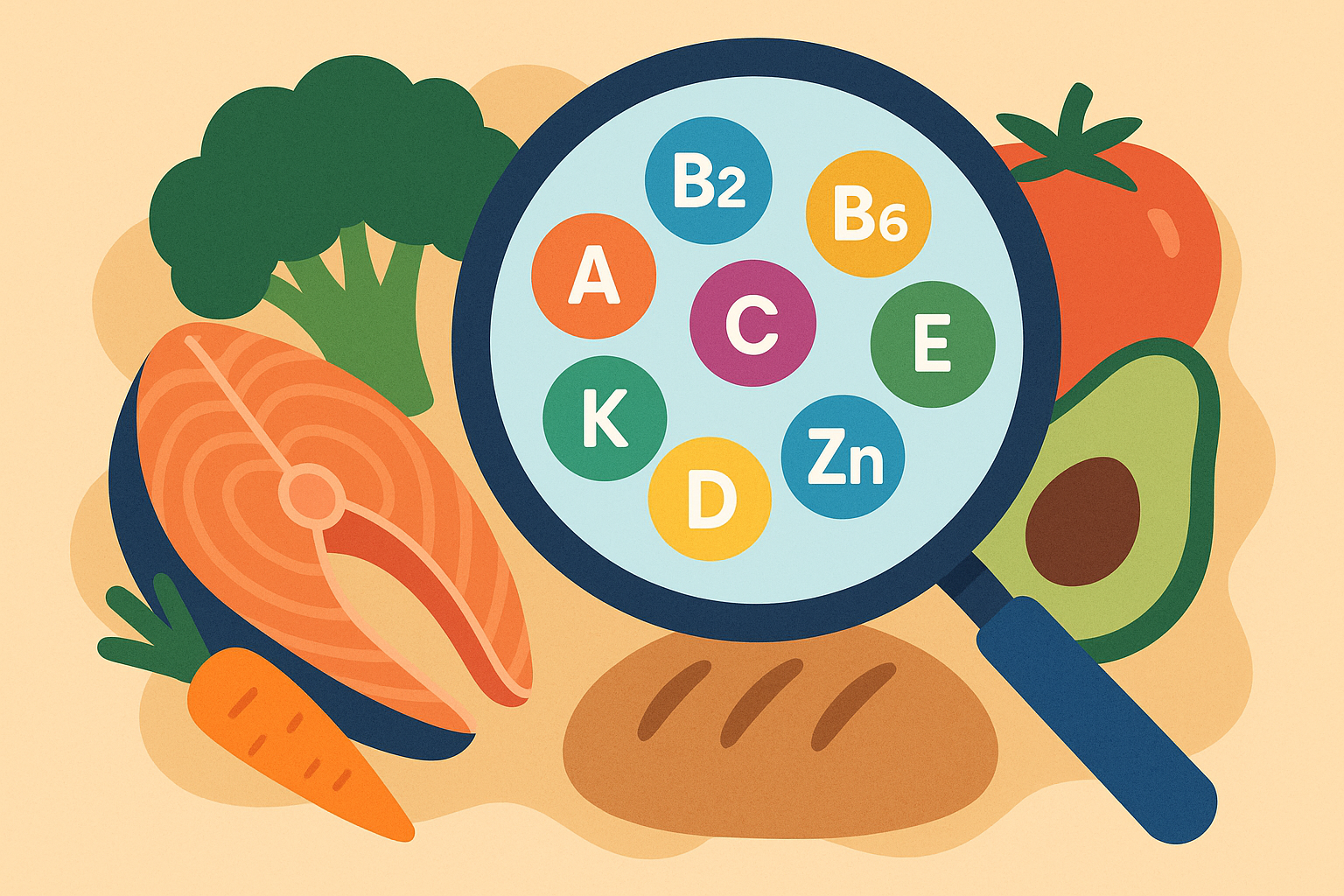
Timing Your Nutrients Like a Pro
The timing and combination of nutrients becomes critical when total intake is limited. Your body’s natural rhythms affect how well you absorb different nutrients, and certain combinations can dramatically improve or completely block absorption rates.
Modern athletic nutrition provides insights into optimized fueling strategies. Professional cyclists now consume “a minimum of 120 grams of carbohydrate – around 500 calories – per hour” (Velo) during intense training, demonstrating how strategic nutrient timing can maximize performance even with specific caloric targets.
Your digestive system operates on predictable rhythms that you can work with for maximum nutrient absorption. Stomach acid production peaks in the morning, making it the optimal time for minerals. Your body produces more digestive enzymes in the afternoon. Evening brings enhanced absorption for certain nutrients as your body prepares for overnight repair.
Syncing Nutrients with Your Body Clock
Aligning specific nutrients with your body’s natural rhythms maximizes absorption and utilization – crucial when your total nutrient intake is severely restricted to 500 calories. Your stomach acid production, hormone levels, and digestive capacity all fluctuate throughout the day.
Most people consume nutrients randomly throughout the day without considering optimal timing. When you’re working with unlimited calories, this inefficiency doesn’t matter much. But when every nutrient counts, timing becomes a critical factor in preventing deficiencies and maintaining energy levels.
Here’s the simple version: eat your vitamins with breakfast when your stomach is ready to work, save magnesium for nighttime to help you sleep, and don’t overthink it. Your body is pretty smart about absorbing what it needs when you give it the basic building blocks.
What you actually need to do:
- Consume B-vitamins and iron in the morning when stomach acid production is highest
- Time magnesium and calcium intake for evening to support sleep and recovery
- Align protein intake with your natural energy rhythm (highest in morning, moderate at mid-day)
| Time of Day | Best Nutrients | Why It Works | What This Actually Looks Like |
|---|---|---|---|
| 6-8 AM | B-vitamins, Iron, Protein | Peak stomach acid, high energy hormones | Multivitamin with breakfast |
| 10-12 PM | Vitamin C, Antioxidants | Enhanced immune function | Berries or citrus with snack |
| 2-4 PM | Healthy fats, Fat-soluble vitamins | Optimal bile production | Avocado or nuts with lunch |
| 6-8 PM | Magnesium, Calcium, Fiber | Supports evening recovery | Leafy greens with dinner |
| 9-11 PM | Sleep-supporting nutrients | Promotes sleep quality | Herbal tea or magnesium supplement |
Strategic Nutrient Pairing for Maximum Absorption
Certain nutrient combinations dramatically improve absorption rates, while others compete for the same pathways. When you only have 500 calories to work with, these interactions become make-or-break factors for preventing deficiencies.
Nutrient interactions become critically important when working with limited calories. Iron absorption can increase by up to 300% when paired with vitamin C, but decreases by 60% when consumed with calcium. These interactions can mean the difference between maintaining adequate nutrient status and developing deficiencies that make you feel like garbage.
Understanding these relationships allows you to structure your meals for maximum benefit. Instead of randomly combining foods, you can create strategic pairings that enhance absorption and avoid combinations that create competition for the same pathways.
What you actually need to do:
- Always pair iron-rich foods with vitamin C sources to enhance absorption
- Separate calcium and iron intake by at least 2 hours to prevent competition
- Include healthy fats with fat-soluble vitamins (A, D, E, K) for optimal absorption
Lisa discovered that taking her iron supplement with orange juice (vitamin C) in the morning and her calcium supplement with dinner increased her energy levels within two weeks. Previously, she had been taking both supplements together, which reduced iron absorption by up to 60% due to mineral competition.
Dealing with Anti-Nutrients That Block Absorption
Understanding how certain compounds interfere with nutrient absorption is especially important when following restrictive eating patterns, and optimizing gut health through strategic approaches can significantly improve your body’s ability to extract maximum nutrition from limited food intake.
Anti-nutrients like phytates, oxalates, and lectins become more problematic when total food intake is limited. These compounds can significantly reduce how much of the good stuff your body actually absorbs, requiring specific preparation and timing strategies to maximize what you get.
These naturally occurring compounds evolved as plant defense mechanisms, but they can mess with human nutrient absorption. Under normal eating conditions, the impact is minimal because you’re consuming excess nutrients. But when every milligram of minerals matters, anti-nutrients can create significant problems.
Food Prep Techniques That Unlock Nutrients
Proper food preparation can dramatically increase nutrient availability and reduce anti-nutrient content. When every calorie must count nutritionally in your 500 calorie diet meal plan, these preparation methods become essential rather than optional.
Traditional food preparation methods developed over thousands of years specifically to reduce anti-nutrients and improve digestibility. Soaking, sprouting, fermenting, and proper cooking techniques can reduce problematic compounds by 50-90% while simultaneously increasing mineral availability.
These techniques require planning and time, but the nutritional payoff is substantial when working with limited calories. A properly prepared serving of legumes can provide significantly more usable nutrients than the same legumes prepared conventionally.
What you actually need to do:
- Soak nuts, seeds, and legumes for 8-12 hours before consumption to reduce problematic compounds
- Choose fermented vegetables when possible to increase nutrient density
- Use nutrient-preserving cooking methods: steaming over boiling, minimal water use, shorter cooking times
Anti-Nutrient Reduction Checklist:
- ☐ Soak grains/legumes overnight before cooking
- ☐ Choose fermented vegetables when possible
- ☐ Steam vegetables instead of boiling
- ☐ Separate high-oxalate foods from calcium sources
- ☐ Time phytate-rich foods away from mineral supplements
- ☐ Use sprouting techniques for seeds and nuts
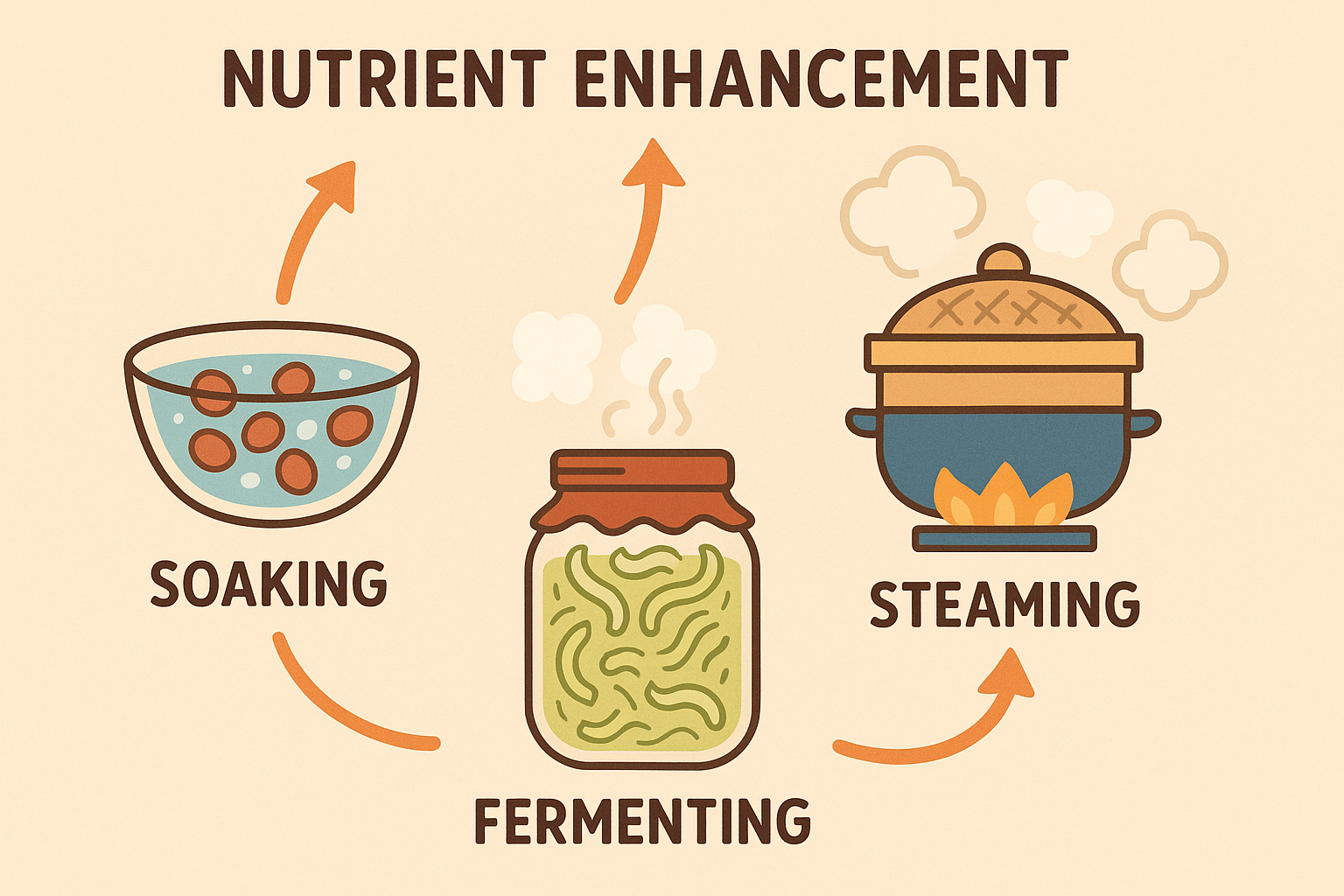
Strategic Supplementation for Extreme Restriction
Strategic supplementation becomes essential during 500-calorie protocols, but timing, form, and combinations must be optimized to prevent waste and maximize absorption. Your digestive capacity may be compromised, so standard supplement approaches often don’t work.
If you’re going to do this, at least take a good multivitamin and don’t try to be a hero about it. Your body is already stressed enough without adding nutrient deficiencies to the mix. But here’s the thing – supplementation during extreme restriction requires a completely different approach than normal circumstances.
Your stomach acid production may be reduced, your digestive enzymes may be depleted, and your absorption capacity may be compromised. Standard supplement forms and timing protocols often fail under these conditions, which means you need to be smarter about what you choose and when you take it.
What you actually need to do:
- Choose chelated mineral forms for better absorption when stomach acid may be reduced
- Split fat-soluble vitamins across meals that contain dietary fat
- Use sublingual or liquid forms for B-vitamins when digestive capacity may be compromised
Getting Back to Normal Eating Without Losing Your Mind
The transition phase requires careful attention to both physical and psychological factors, and understanding intuitive eating principles can help rebuild a healthy relationship with food after extreme restriction.
The exit strategy from 500-calorie meal planning is often more critical than the restriction phase itself. Most approaches completely fail to address the psychological terror of weight regain, the metabolic adaptation, and the social challenges of transitioning back to normal eating patterns. Without a solid plan, you’re setting yourself up for the classic binge-restrict cycle.
Coming off extreme restriction is like learning to drive again after your license was suspended. You remember how to do it, but everything feels foreign and scary. That first “normal” meal might trigger a full panic attack. That’s not weakness – that’s your brain trying to protect you from what it thinks is dangerous.
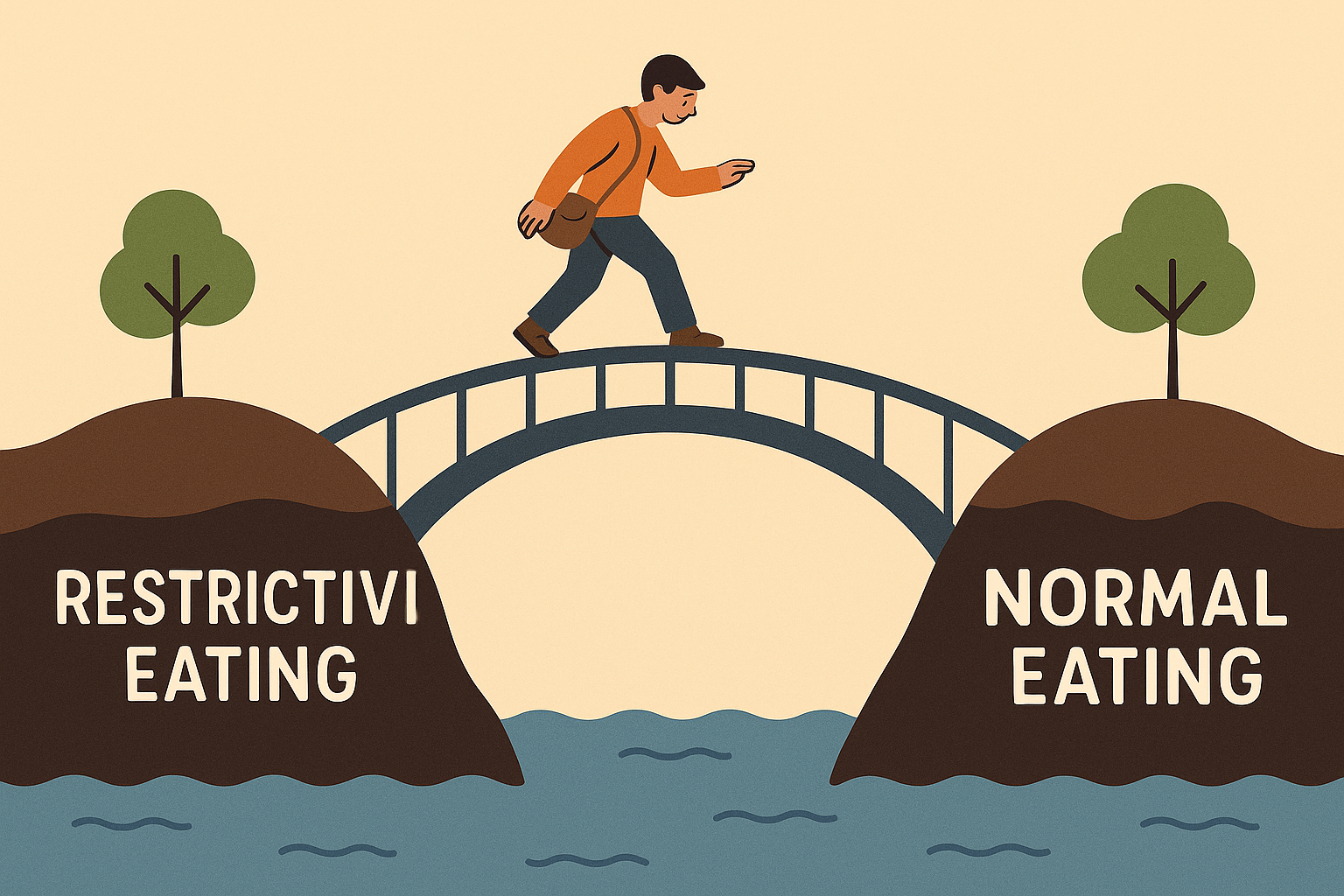
Reverse Dieting Without the Panic
The psychological fear of weight regain combined with metabolic adaptation creates a complex challenge that requires both mental and physical preparation. Your metabolism has adapted to extreme restriction, and your relationship with food has likely become complicated after following a 500 calorie diet.
Reverse dieting is the systematic process of gradually increasing calories while monitoring body composition and metabolic markers. The goal is to restore normal metabolic function while maintaining weight stability. This process requires patience, precision, and a willingness to trust the process even when the scale fluctuates.
The psychological component often proves more challenging than the physical aspects. After weeks or months of extreme restriction, normal portion sizes can trigger intense anxiety. You might feel guilty about eating “too much” even when you’re still below normal caloric intake. This fear can lead to premature restriction or chaotic eating patterns that undermine the entire process.
Restoring Your Metabolic Rate Systematically
Systematically increasing calories while monitoring metabolic markers allows for weight maintenance while restoring normal metabolic function. This process requires patience and precise tracking, but it’s essential for long-term success.
Your metabolism doesn’t bounce back immediately after extreme restriction. Thyroid function, hormone sensitivity, and overall energy expenditure need time to normalize. Rushing this process by adding calories too quickly can trigger rapid weight gain and panic, while moving too slowly can keep your metabolism suppressed indefinitely.
The reverse diet phase is where most people lose their minds. Eating 800 calories after weeks of 500 feels like bingeing, even though it’s still ridiculously low. Your brain will scream that you’re “out of control” when you’re actually just being slightly less restrictive.
What you actually need to do:
- Increase daily calories by 50-100 calories every 5-7 days while monitoring weight stability
- Prioritize adding carbohydrates first to restore hormone sensitivity and thyroid function
- Track body temperature, energy levels, and sleep quality as indicators of metabolic recovery
Reverse Dieting Protocol Template:
Week 1-2: Add 50 calories (primarily carbs)
Week 3-4: Add another 50 calories (mix carbs/fats)
Week 5-6: Add 75 calories (include more protein)
Week 7-8: Add 100 calories (balanced macros)
Monitor: Weight, energy, sleep, mood, body temperature
Overcoming Food Fear and Anxiety
Extended restriction often creates anxiety around “normal” amounts of food. This fear can trigger binge-restrict cycles during transition if not addressed systematically. The goal is gradual desensitization to normal portion sizes and food variety.
Food anxiety develops gradually during restriction but can become overwhelming during transition. Portions that once seemed normal now appear enormous. Foods you previously enjoyed without thought now trigger guilt and fear. This psychological response is normal but needs active management to prevent relapse into restrictive patterns.
The anxiety often shows up as obsessive thoughts about food, constant body checking, or rigid rules about “safe” versus “unsafe” foods. These patterns can persist long after physical hunger has normalized, creating ongoing psychological distress around eating.
What you actually need to do:
- Practice mindful eating with small increases in portion sizes
- Keep a food and mood journal to identify trigger foods that cause anxiety
- Work with a qualified professional to address any disordered eating patterns that develop
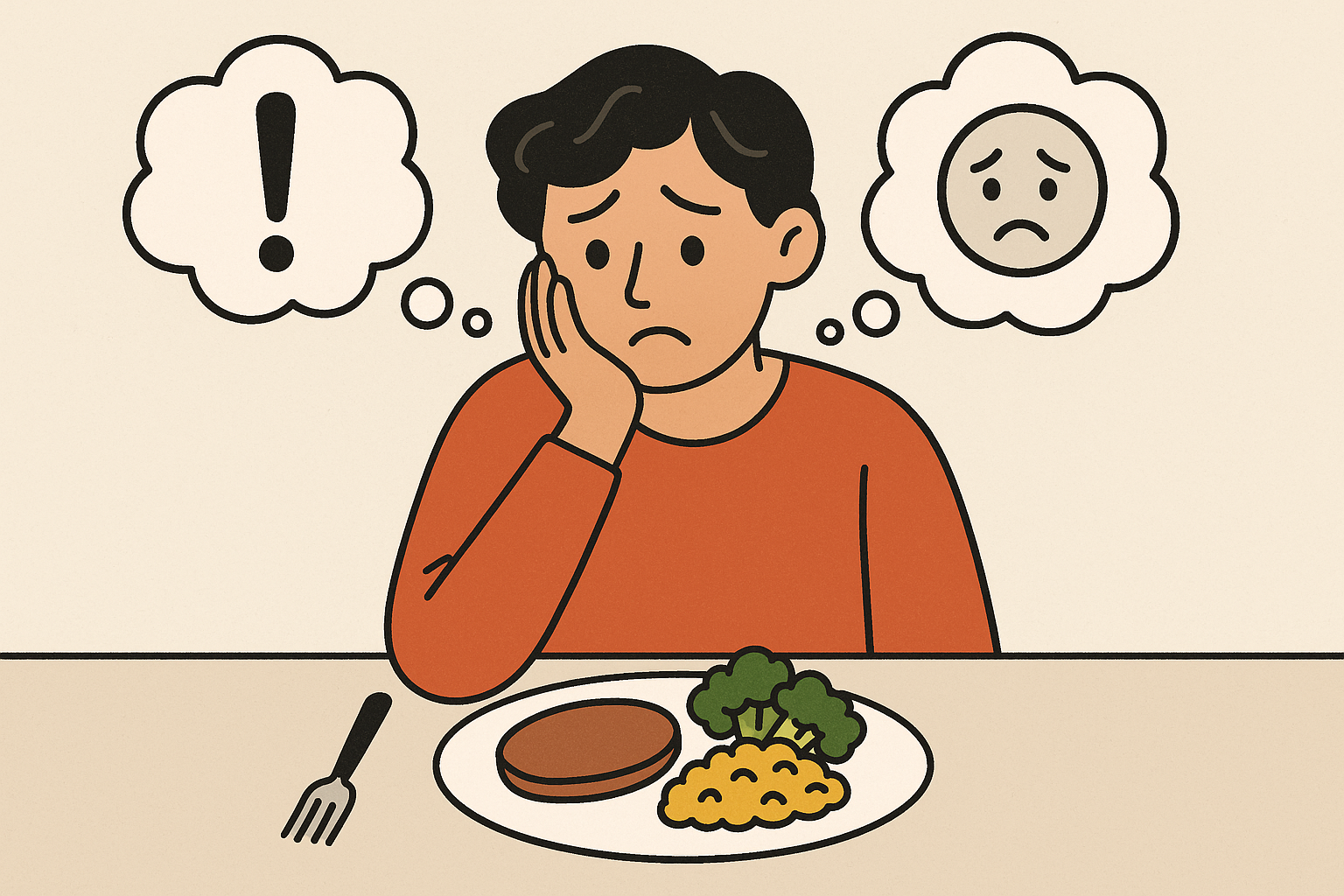
Building Sustainable Habits That Actually Last
The skills and mindsets developed during extreme restriction must be consciously transformed into sustainable long-term habits. The discipline and awareness you’ve developed can be valuable, but the restriction mindset needs to evolve into something more balanced and life-affirming.
Extreme restriction teaches valuable lessons about hunger, satiety, and food awareness that can benefit long-term health when properly integrated. However, the all-or-nothing mindset that enables short-term restriction can become problematic for long-term maintenance. The challenge is extracting the beneficial aspects while releasing the rigid control patterns.
Many people struggle with this transition because they fear that relaxing their vigilance will lead to complete loss of control. This binary thinking – either perfect restriction or complete chaos – prevents the development of flexible, sustainable eating patterns that can last a lifetime.
Redefining Success Beyond the Scale
Successfully transitioning from extreme restriction requires developing a new identity that values health and balance rather than control and deprivation. This identity shift is often the difference between long-term success and yo-yo dieting.
Your definition of success during restriction was likely focused on adherence, weight loss, and control. These metrics become problematic during transition because they don’t account for the complexity of sustainable health behaviors. Expanding your definition of success to include energy levels, sleep quality, mood stability, and social connections creates a more robust foundation for long-term wellness.
Success stopped being about the number on the scale when I realized I could finally recognize actual hunger versus boredom eating. That awareness stuck around long after I went back to normal eating. That’s the real win – developing a more conscious, informed relationship with food that goes beyond temporary weight control.
What you actually need to do:
- Identify the positive aspects of your restriction experience (discipline, mindfulness, health awareness) that you want to maintain
- Develop new measures of success beyond weight control (energy levels, sleep quality, strength, mood stability)
- Create new routines and rituals that maintain structure and mindfulness without extreme restriction
According to research on intermittent fasting approaches, “subjects who followed this eating plan for a whole year lost weight and rated this eating plan very highly as a weight loss plan” (BetterMe), demonstrating that structured approaches can be sustainable when properly implemented with appropriate exit strategies.
The 5:2 diet approach shows promise for long-term success, with studies indicating that “the 5:2 diet enabled them to significantly reduce their overall energy intake and lose weight in just 28 days” (BetterMe), though researchers noted compensatory eating patterns that must be addressed during transition phases.
How Organic Authority can support your journey: If you’re dealing with nutrient gaps during or after extreme restriction, Organic Authority’s high-quality supplements can provide the nutritional insurance you need. Their marine collagen and plant-based supplements are designed to support the skin, hair, and nail health that often suffers during caloric restriction, while their commitment to clean, bioavailable ingredients aligns with the nutrient density principles that make extreme dieting safer and more effective.
Professional meal delivery services recognize the challenge of extreme restriction, with “All Diet-to-Go meals contain between 300 and 500 calories” (Garage Gym Reviews), providing structured support that can help bridge the gap between extreme restriction and normal eating patterns.
Final Thoughts
Look, I’m not going to sugarcoat this – 500 calories a day is extreme. Most nutrition experts will tell you it’s too low, and they’re probably right. If you’re going down this road anyway, please talk to a doctor first. This isn’t a game, and your health is worth more than rapid weight loss.
That said, the journey through 500-calorie meal planning reveals something deeper about sustainable wellness that goes way beyond temporary weight loss. While extreme restriction might provide short-term results, real transformation comes from developing a sophisticated understanding of how your body, mind, and social environment interact with food choices.
What I’ve learned is that success isn’t about having perfect willpower or following the plan flawlessly. It’s about understanding the predictable challenges – the brain chemistry changes, the social pressures, the nutrient absorption issues, and the transition difficulties – and having strategies ready before you need them.
The truth is, extreme dieting taught me more about my relationship with food than any “normal” diet ever did. Not because it was healthy – it probably wasn’t – but because it stripped away all the noise and showed me how much of my eating was emotional, social, and habitual. That awareness? That’s what actually changed everything.
Would I do 500 calories again? Honestly, probably not. Did I learn things about hunger, discipline, and my relationship with food? Absolutely. But there are easier ways to get those insights that don’t involve turning every meal into a mathematical equation.
If you’re thinking about trying this because you saw it in a blog (even this one), please talk to someone who knows your health history first. I’m just sharing what I learned, not prescribing what you should do. Your body, your choice – but make it an informed one.
The most important insight? Your relationship with food, your body, and your health will be forever changed by this experience. Whether that change is positive or negative depends on how consciously you approach not just the restriction phase, but the entire journey including the return to normal eating. The goal isn’t just weight loss – it’s developing a more conscious, informed relationship with food and health that can actually last a lifetime.

